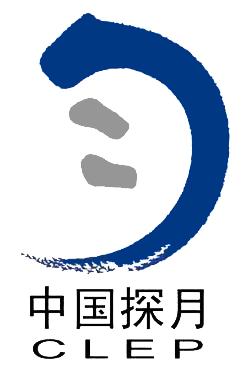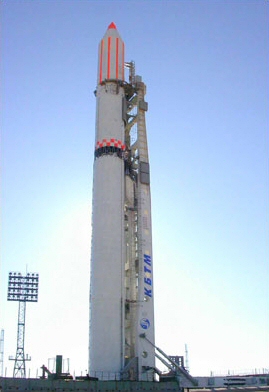
In astronomy, the new moon is the first lunar phase, when the Moon and Sun have the same ecliptic longitude. At this phase, the lunar disk is not visible to the naked eye, except when it is silhouetted against the Sun during a solar eclipse.

Chaand Raat is a South Asia location, used for the eve of the Muslim festival of Eid ul-Fitr; it can also mean a night with a new moon for the new Islamic month Shawwal. Chaand Raat is a time of celebration when families and friends gather in open areas at the end of the last day of Ramadan to spot the new moon, which signals the arrival of the Islamic month of Shawwal and the day of Eid. Once the moon is sighted, people wish each other Chaand Raat Mubarak or Eid Mubarak. Women and girls decorate their hands with mehndi (henna), and people prepare desserts for the next day of Eid and do last rounds of shopping. City streets have a festive look, and brightly decorated malls and markets remain open late into the night. Chaand Raat is celebrated festively and passionately by Muslims all over South Asia, and in socio-cultural significance, is comparable to Christmas Eve.

Badr-A was the first artificial and the first digital communications satellite launched by Pakistan's national space authority — the SUPARCO — in 1990. The Badr-A was Pakistan's first indigenously developed and manufactured digital communications and an experimental artificial satellite which was launched into low Earth orbit by Pakistan on 16 July 1990, through a Chinese carrier rocket. The launch ushered new military, technological, and scientific developments in Pakistan and also provided data on radio-signal distribution in the ionosphere. Originally planned to be launched from the United States in 1986, the Challenger disaster furthered delayed the launch of the satellite which changed the plan. After the People's Republic of China offered Pakistan to use its facility, the Badr-A was finally launched from Xichang Satellite Launch Center in 1990 on Long March 2E. Badr-A travelled at 17,500 miles per hour (28,200 km/h), taking 96.3 minutes to complete an orbit, and emitted radio signals at the 145 to 435 MHz bands which were operated by Pakistan Amateur Radio Society (PARS). The Badr-A successfully completed its designed life, and a new satellite was proposed to be developed.

The Chinese Lunar Exploration Program, also known as the Chang'e Project after the Chinese moon goddess Chang'e, is an ongoing series of robotic Moon missions by the China National Space Administration (CNSA). The program incorporates lunar orbiters, landers, rovers and sample return spacecraft, launched using Long March rockets. Launches and flights are monitored by a telemetry, tracking, and command (TT&C) system, which uses 50-meter (160-foot) radio antennas in Beijing and 40-meter (130-foot) antennas in Kunming, Shanghai, and Ürümqi to form a 3,000-kilometer (1,900-mile) VLBI antenna. A proprietary ground application system is responsible for downlink data reception.

The Space & Upper Atmosphere Research Commission (SUPARCO) is the executive and national space agency of Pakistan. It is headquartered at the capital city of Islamabad in the northern part of Pakistan with additional facilities at the University of Punjab in Lahore.
Luna-Glob is a Moon exploration programme by Roscosmos meant to progress toward the creation of a fully robotic lunar base. When completed, the programme will continue with crewed lunar missions, starting with a crewed orbiter spacecraft called Orel.

The Badr-B is the second spacecraft and the first earth observation satellite launched into Earth orbit on 10 December 2001 at 09:15 by the SUPARCO — Pakistan's national space agency. Badr-B is a microsatellite, with a mass of ~70 kg, and contained the computerized system to conduct the studies on the gravity gradient. Badr-B is a research satellite to explore the upper atmosphere and the near space, and carried a large array of instruments for geophysical research.
The Ministry of Science and Technology Urdu: وزارت سائنس و ٹیکنالوجی, wazarat-e- science o technology is a Cabinet-level Ministry of the Government of Pakistan concerned with Science and Technology in Pakistan and in general, Pakistan's science policy, planning, coordination and directing of efforts to initiate and launch scientific and technological programs as well as projects aimed at economic development.
Badr is a series of satellites operated by Pakistan. The first satellite Badr-1, was launched in July 1990.
The Pakistan Remote Sensing Satellite (PRSS), commercially known as Remote Sensing Satellite System (RSSS), is a dual-purpose Earth observational and optical satellite. Pakistan Remote Sensing Satellite-1 (PRSS-1) was launched from China's Jiuquan Satellite Centre on 9 July 2018.

Muhammad Shahid Qureshi or Shahid Qureshi, styled as M. Shahid Qureshi, is a Pakistani mathematician, astrophysicist and a renowned astronomer. He is an academic and an eminent educationist from Pakistan who has published articles in the fields of astrophysics and astronomy. He is the retired professor of astrophysics and astronomy at Karachi University and Institute of Space and Planetary Astrophysics (ISPA), and former director of ISPA, the country's prominent institution in the field of planetary astrophysics and planetary astronomy. He previously served as an assistant professor of mathematics and computer science. He also the founding director of the Department of Mathematics at Institute of Business Administration, Karachi.
The Space Programme 2040 is a satellite development and launch programme of the Space and Upper Atmosphere Research Commission (Suparco), Pakistan's space research authority. The Space programme 2040 intends to replace the Badr satellite programme and geo-stationary communication satellite. On 11 August 2011, Paksat-IR was launched from Xichang Satellite Launch Center by China, making it first satellite to be launched under this programme. According to Suparco, five GEO satellites and six low Earth orbit (LEO) satellites will be launched between 2011 and 2040.
The Executive Committee of the Space Research Council, was an executive and joint bureaucratic directorate that was established in 1981. The committee was tasked with formulating and developing guidelines for the Pakistani space program as well as coordinating financial management of the program. The committee was placed under the joint control of the Ministry of Finance led by Ghulam Ishaq Khan and Ministry of Science led by Lieutenant-General Zahid Ali Akbar and officials of PAEC led by Munir Ahmad Khan. It was established under the executive decree, "Ordinance No. XX" of 1981, which was issued in the Gazette of Pakistan on 21 May 1989, by the President of Pakistan. Since its establishment, approximately 13 meetings of ECSRC were held and headed by the Finance minister. The ECSRC took financial decision of setting the Flight Test Center on Sonmiani Beach as well as managing the financial and scientific development of integrated space programme on the other hand. The last meeting of ECSRC was held on 9 September 1999, and was officially devolved into Space and Upper Atmosphere Research Commission (Suparco) and the Nuclear Command Authority, the following year.

Muḥammad Muneeb-ur-Rehman is a Pakistani Mufti and former chairman of Ruet-e-Hilal Committee. He is a professor at Jinnah University for Women, Member of National Academic Council of Institute of Policy Studies, Head of Shariah Board of Burj Bank and President of Tanzeem-ul-Madaris and Darul Uloom Naeemia, Karachi.
Chang'e 6 is a planned robotic Chinese lunar exploration mission that is expected to launch in 2025 and perform China's second sample return mission. Like its predecessors, the spacecraft is named after the Chinese moon goddess Chang'e.

The Chandrayaan programme, also known as the Indian Lunar Exploration Programme is an ongoing series of outer space missions by the Indian Space Research Organisation (ISRO). The programme incorporates lunar orbiter, impactor, soft lander and rover spacecraft. The name of the programme is from Sanskrit candrayāna (transl. 'Moon-craft').
Central Ruet-e-Hilal Committee of Pakistan is the department which announces the sighting of the new moon. Its head is now Maulana Abdul Khabir Azad assisted by 150 observatories of the Pakistan Meteorological Department.
Mufti Shahabuddin Popalzai is an Islamic cleric, Imam, Khatib and head of the regional moon-sighting committee at the historic Qasim Ali Khan Mosque, Peshawar, Khyber Pakhtunkhwa, Pakistan. The committee, whose existence predates the creation of Pakistan, traditionally declares the sighting of the Ramadan and Shawwal moons, resulting in the fasting and Eid in certain regions of Khyber Pakthunkhwa including Peshawar, although most of the rest of Pakistan follows the central Ruet-e-Hilal Committee.

The Korea Pathfinder Lunar Orbiter (KPLO), officially Danuri, is South Korea's first lunar orbiter. The orbiter, its science payload and ground control infrastructure are technology demonstrators. The orbiter will also be tasked with surveying lunar resources such as water ice, uranium, helium-3, silicon, and aluminium, and produce a topographic map to help select future lunar landing sites.

Abdul Khabeer Azad is a Pakistani Islamic scholar who is the current chairman of Ruet-e-Hilal Committee, Pakistan.











